How Much Does Shopping in the Reduced Section Save You?
With ever-growing food bills, how much does buying reduced items from the supermarket actually save you?


We’ve all noticed it, food bills have skyrocketed, particularly over the last year or so. What would once buy you a full trolley or basket doesn’t seem to fill them as much as it once did. In January 2023, Richard Partington at The Guardian reported that UK food inflation had reached a staggeringly high 13.3% in December 2022. This was a new record high and these high levels of food inflation are expected to continue. Alongside this, the UK government reported that the UK annually wastes an estimated 10.2 million tonnes of food and drink a year, with 260,000 tonnes coming from retailers. Whilst targets have been set and apps such as Too Good To Go help reduce waste in localised areas, more needs to be done to reduce food waste.
So with record levels of food inflation and food waste, we could all do with a way to save and reduce food waste. One of the most popular and easiest ways to save on your weekly shop is to shop in the reduced section. Reduced sections are where supermarkets put foods that are close to approaching their use-by or sell-by dates and are normally marked with yellow stickers. The food is completely safe to eat and use as it’s still within date but it’s just approaching the point where the supermarket can no longer sell and they’re trying to minimise their losses. So while those yellow stickers can lead to savings, actually how good are the deals? Are some supermarkets’ reductions better than others? And do you get better deals depending on the type of product you’re purchasing?
Have no fear, we’re going to find out.
Why are items reduced?
Some of you may be put off purchasing reduced items, but there’s no reason to be. Supermarkets reduce items as they approach their sell-by, best before, or use-by date to help cut down on losses from food waste. Supermarkets also reduce things where there may have been damage, such as a multipack of items where one is missing.
What’s the difference between sell-by, best before and use-by you ask?
Sell-by - Sell-by or Display Until dates are more for retailers rather than customers and have no impact on when it’s safe to eat or cook the food.
Best Before - Best before dates are just to show when the food is freshest and can be consumed after this point. Best-before dates normally apply to food that doesn’t need to be kept in the fridge or the freezer.
Use-by - Use-by dates indicate the latest the food is safest to eat. After the use-by date, you shouldn’t eat it or cook it even if the food smells or looks okay.
What did we find?
To investigate how much you can save by picking up items from the reduced sections, we sent our team out to do a little bit of field research. We tried to find the best deals we could in each of our local supermarkets and to see how much of a dent they can make in your weekly shop.
A little tip when shopping in the reduced sections, you’ll find the best prices towards the end of the day as supermarkets will be doing their best not to throw anything away. However, you’ll be lucky to find much of a selection of items left at the end of the day once a whole day’s worth of shoppers have had the opportunity to snap up a bargain. Hunting for items in the reduced section can also be more fruitful around public holidays and long weekends.
So what did we find?
Sainsbury's finds
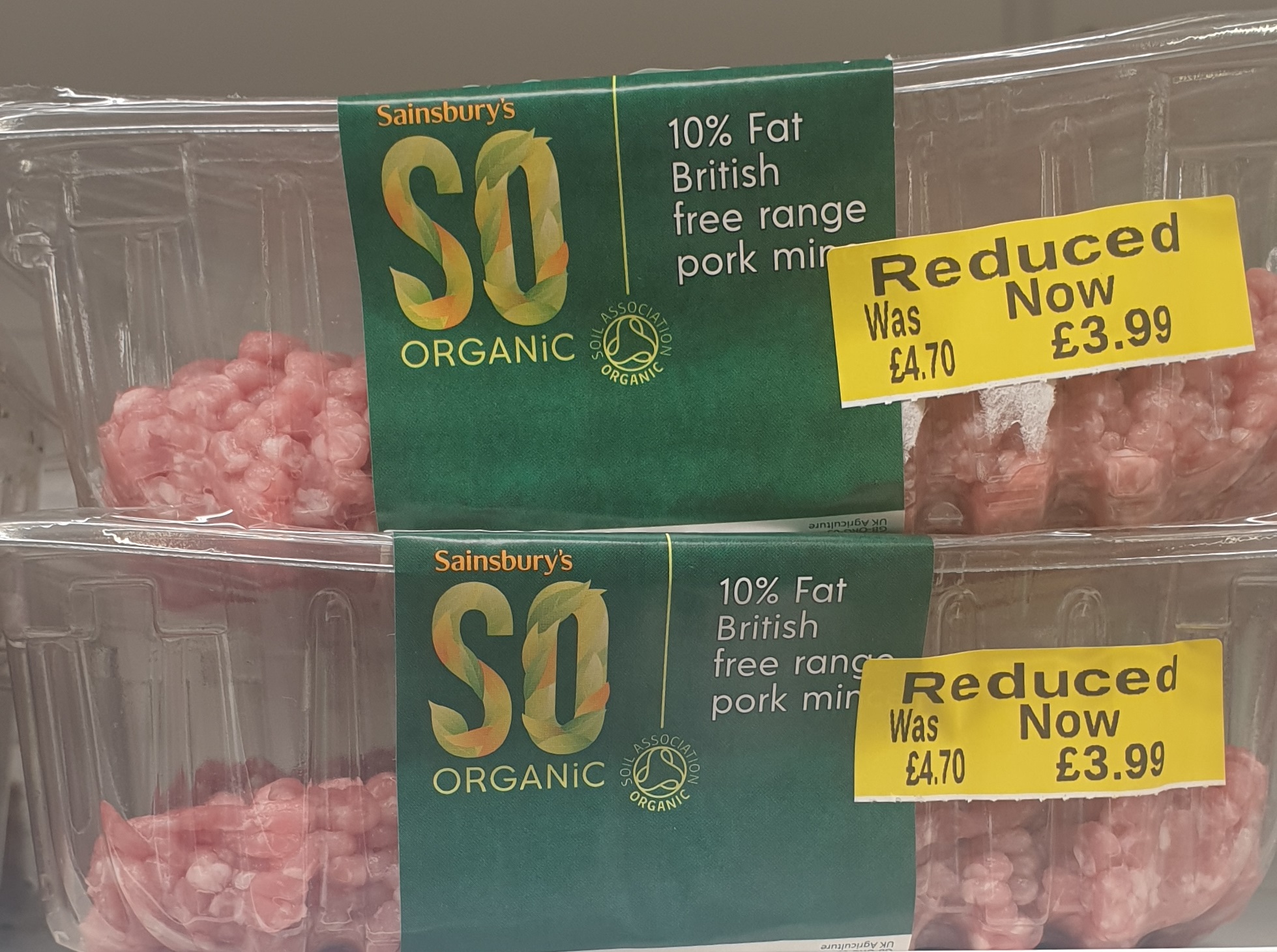

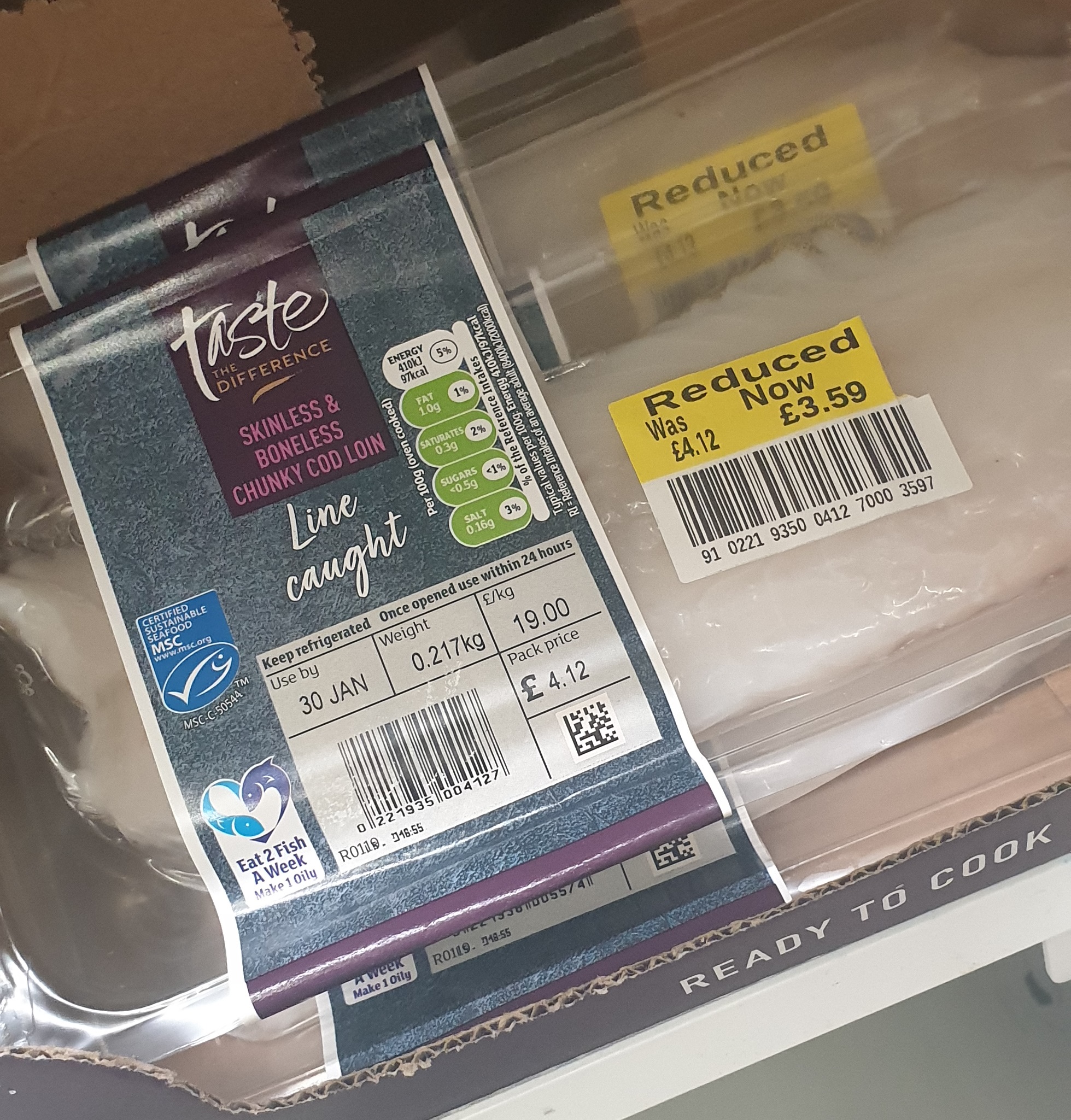
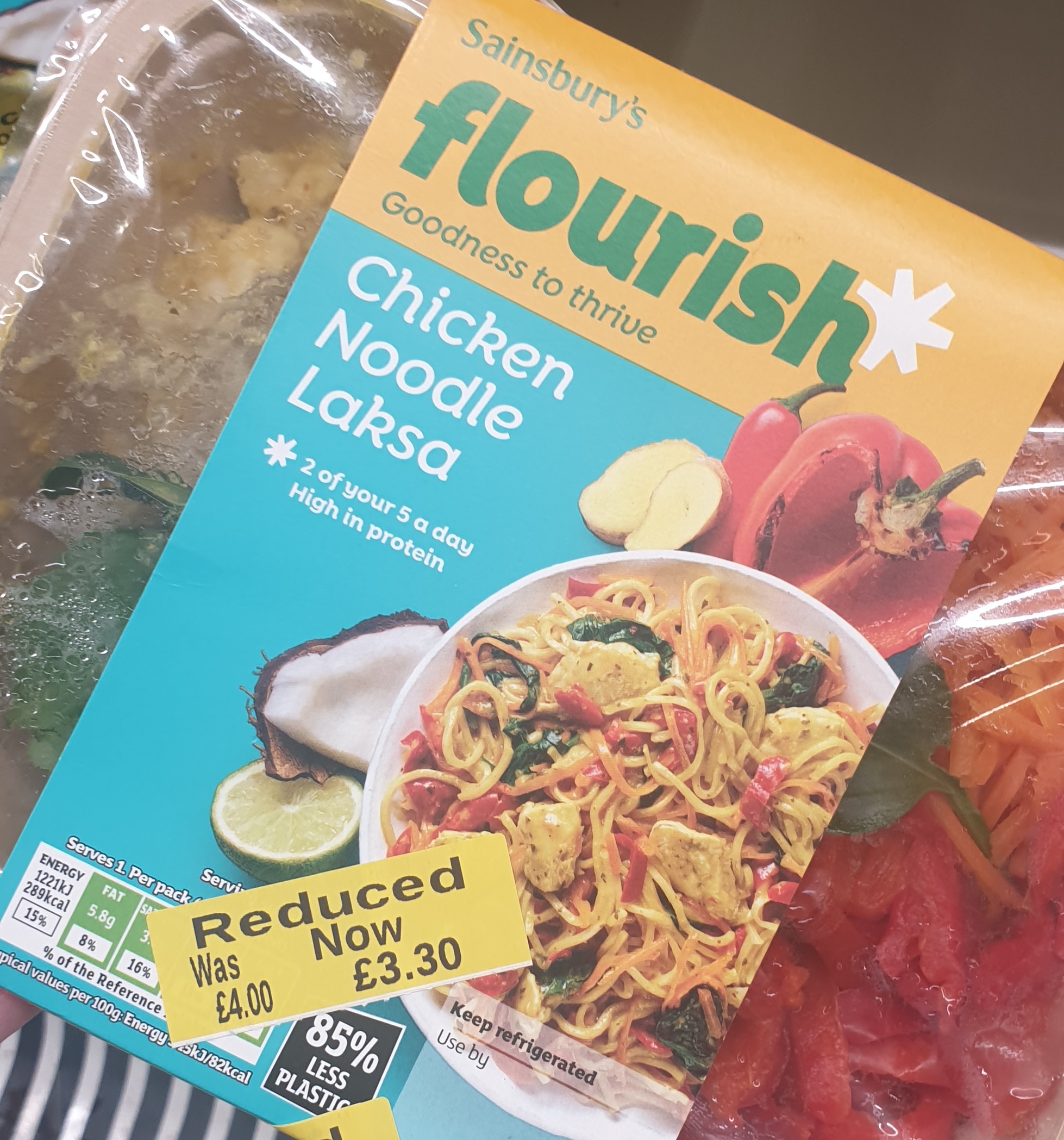

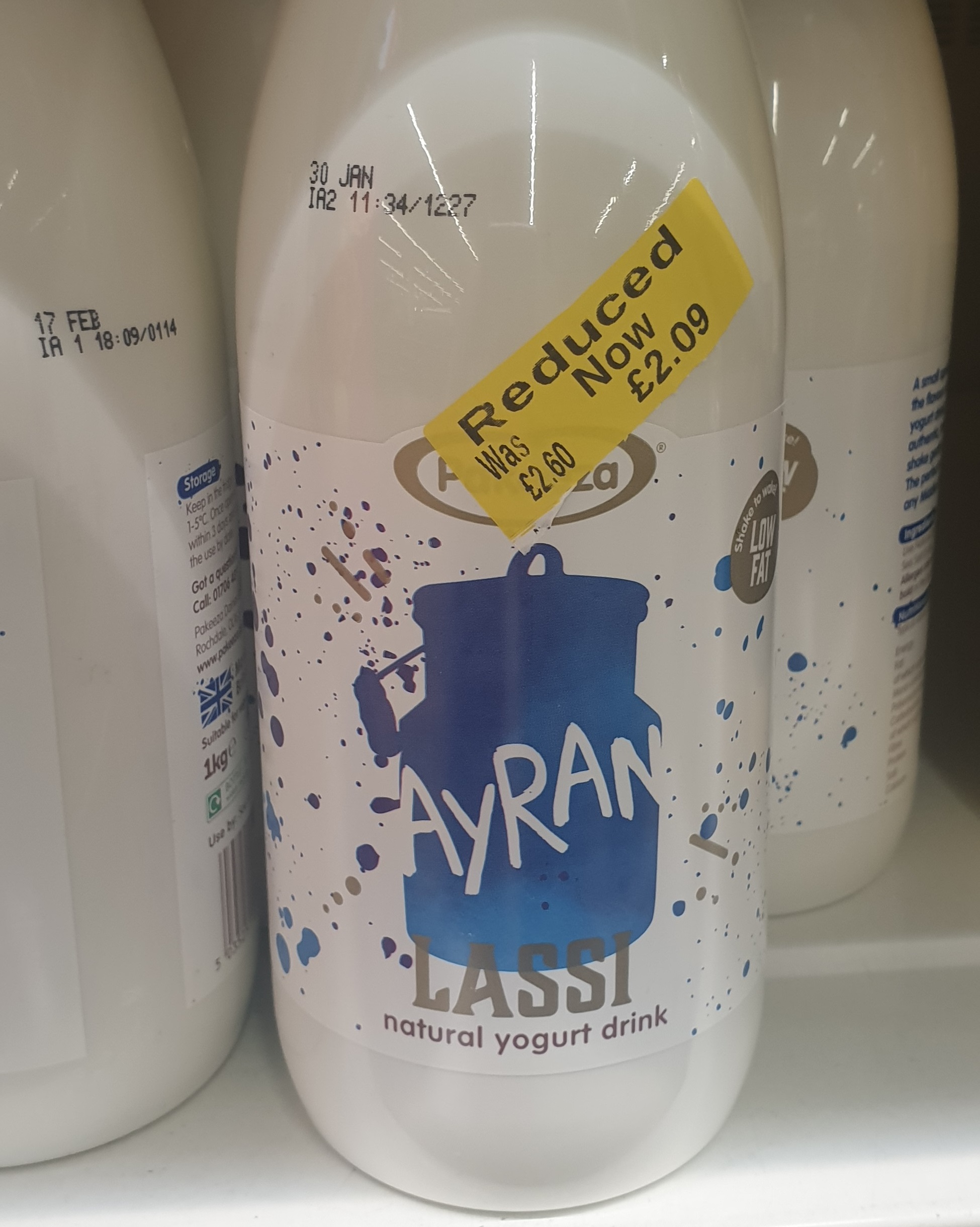
First up is Sainsbury’s reduced section. We managed to find some pork mince available for £3.99, down from £4.70, a reduction of 15%! Southern Fried Chicken Fillets were also reduced by 15% down to £2.99. The Skinless & Boneless Chunky Cod Loins however were only reduced by 13% in comparison. A Chicken Noodle Laksa was reduced by 17.5% and a Quiche Lorraine was reduced by 16%. Finally, we found a natural yoghurt drink reduced by 19%.
Whilst there is some level of savings on offer from Sainsbury’s, the level of discounts on offer don’t scream must-have bargains. However, if you were able to get a few of the items you were after or make meals out of what was available then it could make a small dent in the total cost of your weekly food shop.
Asda finds
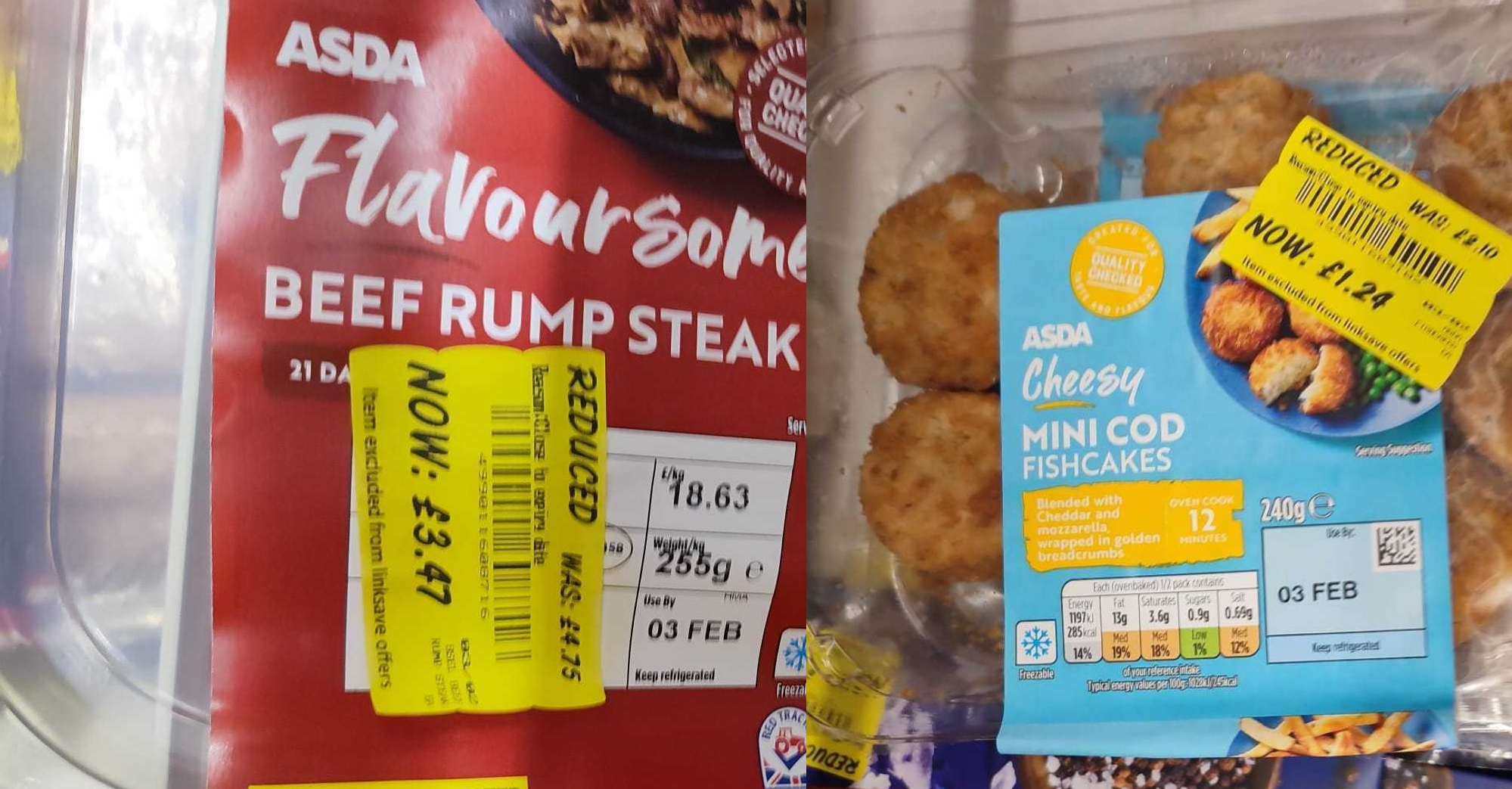
Whilst there were slim pickings in terms of reductions, Asda did offer a glimpse of bigger savings than Sainsbury’s. The beef rump steak found by our team was reduced by 27% bringing it down to £3.47. Whilst the Mini Cod Fishcakes were reduced by 41%, making them a very tempting purchase and a solid saving. As long as you find multiple savings as big as the fishcakes then you could really start saving on meals and bring down the cost of that weekly shop.
Tesco finds
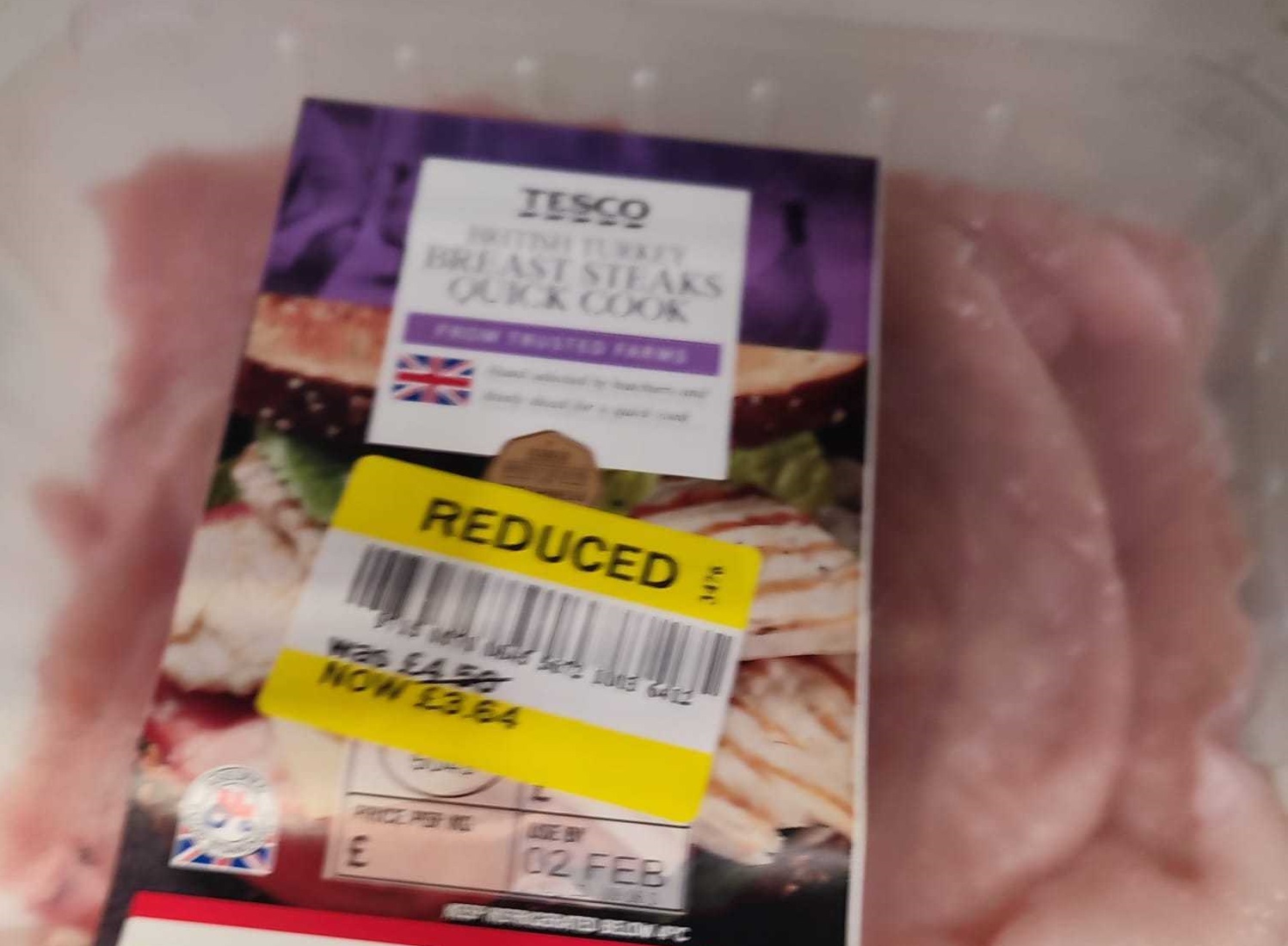
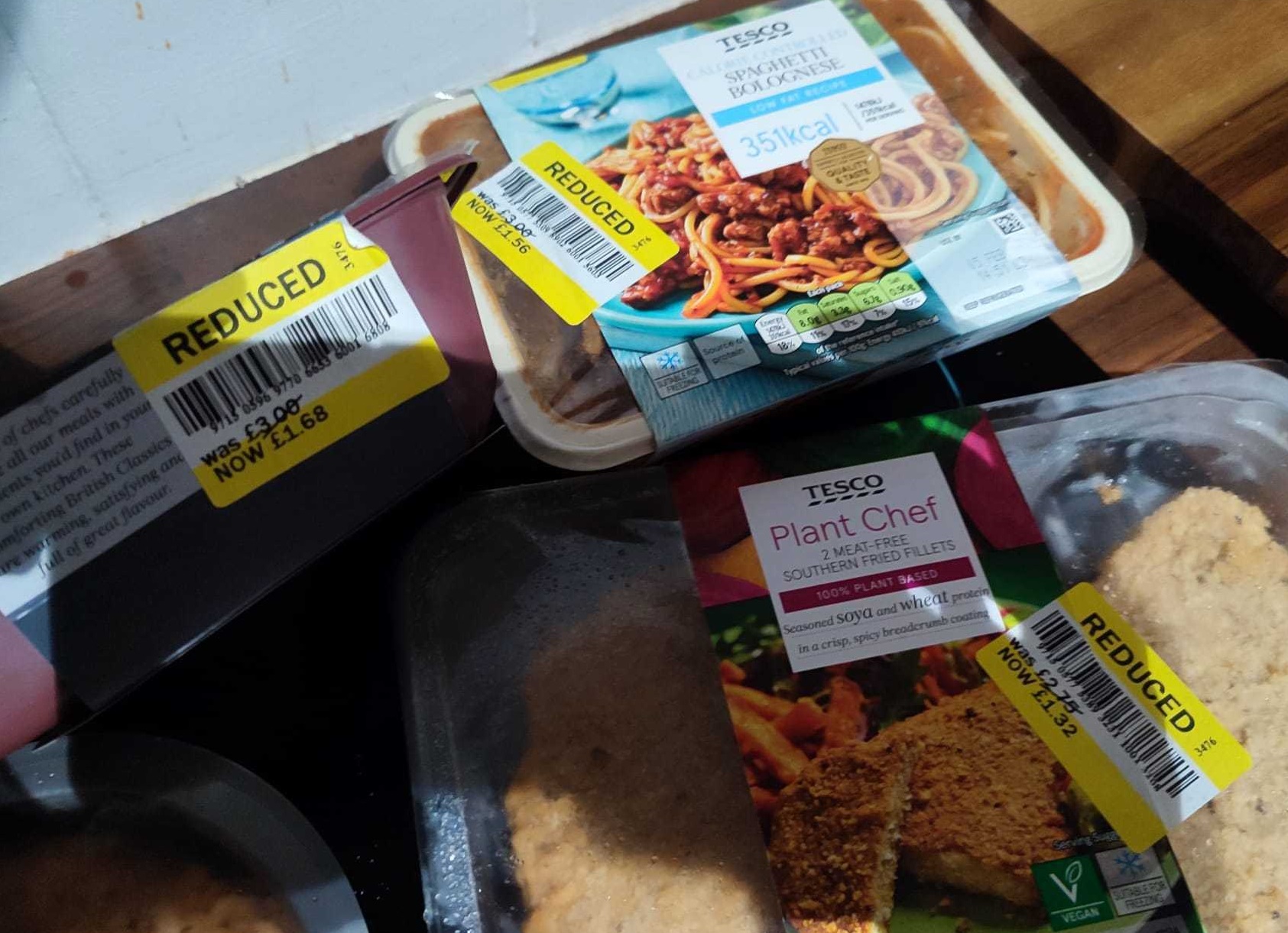
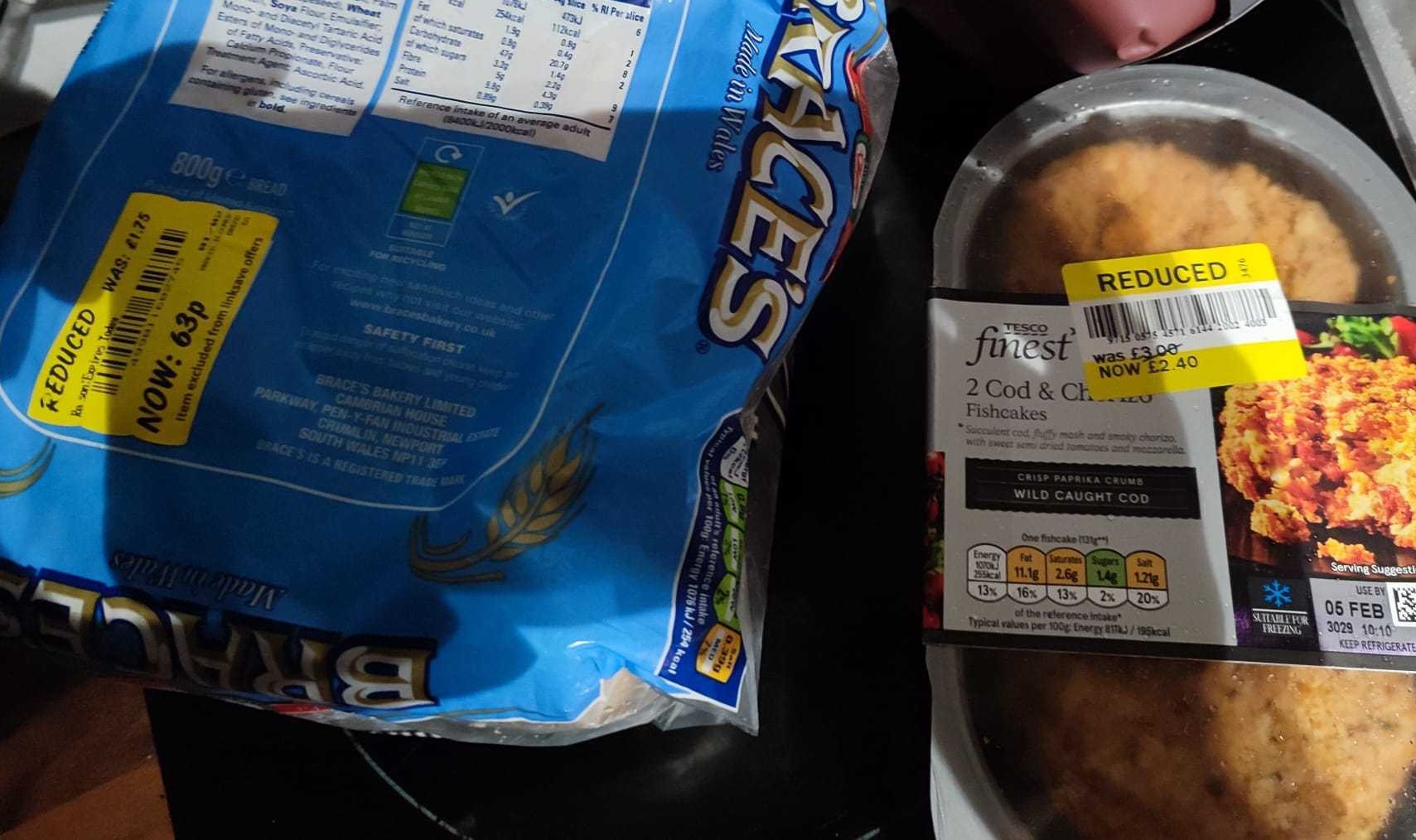
Last up is Tesco. In terms of fresh meat, we found turkey steaks that were reduced by 19% down to £3.64. In comparison to Sainsbury’s ready meal which was reduced by only 17.5%, this spaghetti bolognese was reduced by 48%, nearly half price! There were also meat-free southern fried fillets for less than half price, which could have been ours with a 52% discount. This is particularly impressive as vegetarian/vegan options tend to be more expensive in general, so any savings on these items are always welcome. We also found 2 cod & chorizo fishcakes reduced by 20% down to £2.40 as well as a loaf of bread for 63p, a saving of 64%.
Out of the reductions we found, Tesco’s were by far the most generous and offered the biggest savings. Especially the ready meal and the meat-free southern fried fillets, both offering excellent savings and value options for meals.
Is there a difference between supermarkets?
From the items our team has gathered, there is definitely a difference between the amount that the different supermarkets reduce items by. Sainsbury’s seems to offer the lowest reductions in price. Asda offered the second-best reductions, whilst Tesco offered a staggering 52% and 64% off selected items.
Obviously, this is only based on the items we found on the days that we visited and based on what was reduced at the time. Different days could get you different prices and different items could be reduced more. But from our small sample size, Tesco is definitely the best option for short-dated bargain hunters.
Is there any difference between types of products?
Yes, there does seem to be a difference in the level of saving offered on different types of products. Fresh meat and fish (normally the most expensive food items in your shop) seemed to benefit from the smallest reduction in price, whilst ready meals and prepared fish and meats such as the fishcakes seemed to get the biggest reductions. So if you’re more of a ‘stick everything in the oven’ type then you can definitely get some noticeable savings, whereas people who cook scratch won’t save as much.
Limitations of the reduced section
As we’ve seen, one downside of using the reduced sections to save is you are limited by the options available. They can be great if you find the ingredients you need to cook a meal, but if you catch them at the wrong time, either before more items have been reduced or after other people have had their pick of items, it can be difficult to come up with a meal.
Reduced sections can be a great way to save on family meals, but if you’re cooking for one or two people then they may not be as helpful as you’re more likely to make food last for 2 or 3 days rather than having different meals every night. This is especially true when looking at things like meat and fish where eating past the use-by date can lead to illness. So if you shop the reduced section and spread your meals out over multiple days, ensure that ingredients like that can be frozen and defrosted.

I’m Jordan and I’ve been working at MyVoucherCodes since the summer of 2021. Outside of money-saving, I’m a keen musician and guitar player and can regularly be found in a dingy venue somewhere in Bristol or perched in front of my laptop recording. When I’m not doing this you’ll find me exploring the city, watching cult B movies, reading a Stephen King or Murakami novel, or guiding the mighty Bath City to Champions League glory on Football Manager. All the cliches, I know.
-
 Grab Free Cash with Supermarket Christmas Saving Schemes
Grab Free Cash with Supermarket Christmas Saving SchemesChristmas Plan in advance this Christmas and get more for your money at the UK's biggest supermarkets.
By Sarah-Jane Outten
-
 What is Uber One and is it Worth it?
What is Uber One and is it Worth it?Takeaways If you are wondering what Uber One is, this article will tell you how much you can save and how to become an Uber One member.
By Sarah-Jane Outten
-
 How to Get Cheap Easter Eggs
How to Get Cheap Easter EggsEaster Here’s your comprehensive guide to buying cheap Easter eggs in the UK, including tips on the cheapest time to buy, where to find the best deals, and how to choose the best value vegan Easter eggs.
By Nathan Walters
-

 Tips to Get Cheap Domino’s Pizza
Tips to Get Cheap Domino’s PizzaTakeaways A complete breakdown of how you can save money on Domino’s Pizza in 2025.
By Aron Clinch
-
 The Rise of Non-Alcoholic Drinks: Are They Cheaper?
The Rise of Non-Alcoholic Drinks: Are They Cheaper?Special Occasions Non-alcoholic drinks are getting more popular, but one question often arises: are non-alcoholic drinks cheaper than their alcoholic counterparts?
By Nathan Walters
-
 Shrinkflation: Which Foods Are Affected?
Shrinkflation: Which Foods Are Affected?Groceries In this article we talk about shrinkflation and which products have been affected.
By Nathan Walters
-
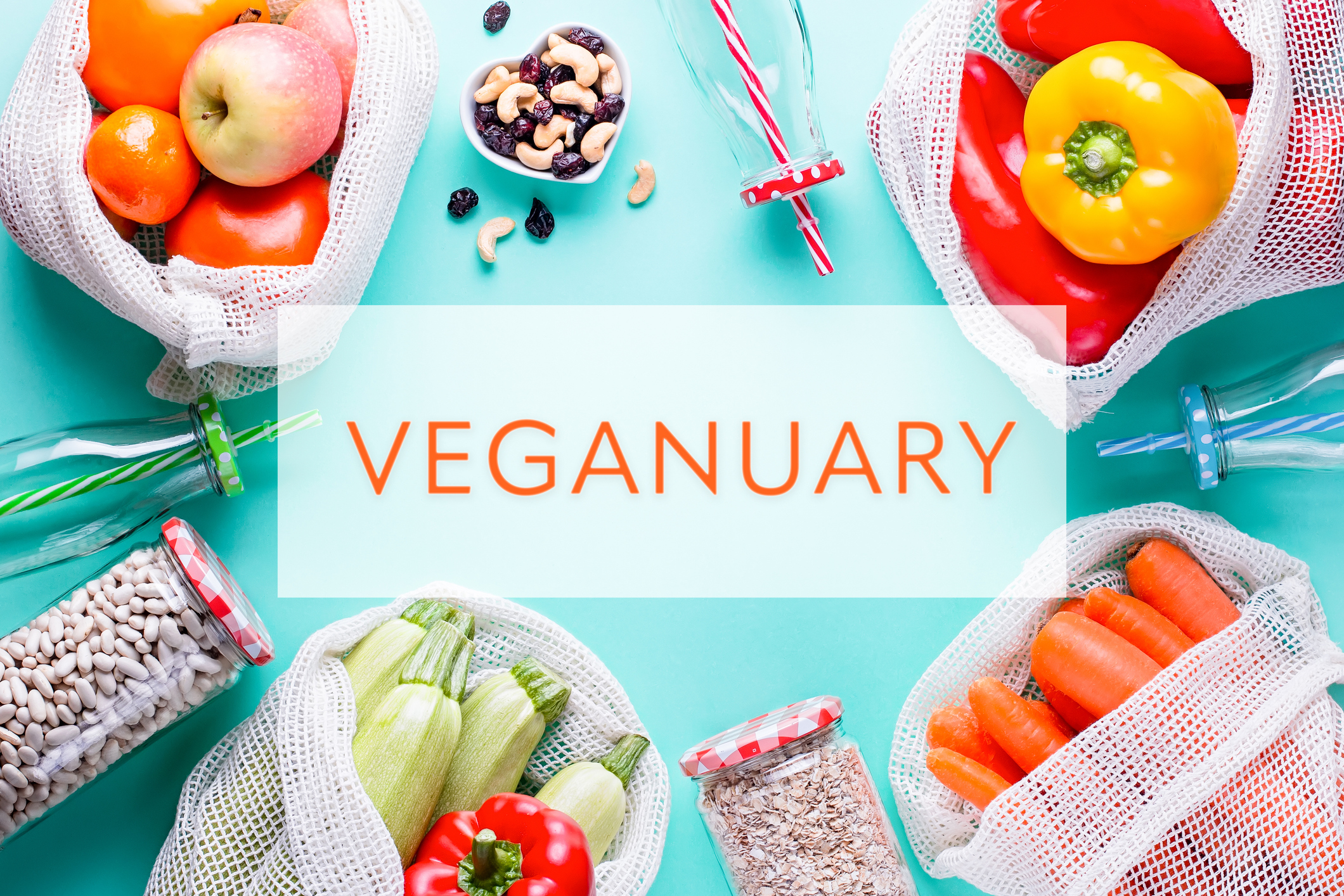 Embracing Veganuary: Does it Save You Money?
Embracing Veganuary: Does it Save You Money?Vegan In this article, we analyse if switching to veganism for January saves money and how else it benefits you.
By Nathan Walters
-
 Christmas Dinner on a Budget
Christmas Dinner on a BudgetChristmas With food prices rising constantly, we provide tips on making a Christmas dinner for six on a budget and which stores to shop at.
By Nathan Walters